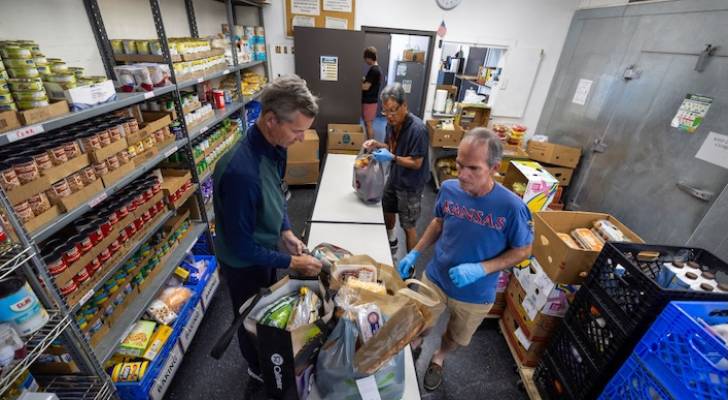Market Highs and Empty Plates: The Hunger Disconnect in America

The Growing Crisis of Food Insecurity in the United States
The United States is often seen as a global economic powerhouse, yet an increasing number of its citizens are finding it difficult to afford basic necessities like food. A recent survey by Morning Consult, as reported by Axios, highlights a troubling trend: 15.6% of U.S. adults said they sometimes or often didn’t have enough to eat in May — nearly double the share from 2021.
This growing issue has been exacerbated by the rollback of key support programs such as the Supplemental Nutrition Assistance Program (SNAP) and the enhanced Child Tax Credit. These initiatives once helped alleviate food insecurity, but their reduction has left many families struggling to make ends meet.
John Leer, chief economist at Morning Consult, pointed out the stark contrast between the booming financial markets and the real-life challenges faced by many Americans. “There's such a disconnect now between record highs on Wall Street and elevated levels of food insecurity,” he said in the report.
Rising Demand for Food Assistance
In Philadelphia, the Share Food Program, a major food bank network, has experienced a surge in demand, with requests for food increasing by 120% over the past three years. George Matysik, the program’s director, noted that the need began to rise as soon as federal aid started to decrease in 2022.
With Congress recently passing significant cuts to SNAP, the situation could worsen. Research from the Urban Institute suggests that these changes could cause 22.3 million families to lose some or all of their SNAP benefits.
The Impact of Inflation on Daily Life
Food prices have climbed sharply in recent years, with the Consumer Price Index (CPI) food index surging 26% over the past five years. The USDA predicts a further 2.9% increase in food prices in 2025. However, the impact of inflation extends beyond groceries.
Rent, utilities, and transportation costs have also risen, steadily eroding the purchasing power of everyday income. This makes budgeting more crucial than ever. By carefully managing expenses, individuals can find ways to reduce costs without sacrificing essential needs.
For example, car insurance is a major recurring expense. According to Forbes, the average cost of full-coverage car insurance is $2,149 per year. However, rates vary depending on location, driving history, and vehicle type. Using platforms like OfficialCarInsurance.com allows individuals to compare quotes from multiple insurers and potentially save hundreds of dollars annually.
Saving on Everyday Expenses
Another way to manage rising costs is through cash-back apps like Upside. These platforms offer savings on everyday purchases, including gas, groceries, and dining out. For instance, users can earn up to 25 cents back per gallon on fuel, which can significantly reduce expenses at the pump.
Additionally, using referral codes like WHY NOT25 can provide even more savings on initial transactions. These small but meaningful steps can add up over time, helping individuals stretch their budgets further.
Investing Against Inflation
As inflation continues to erode purchasing power, many investors are turning to assets that can help protect their wealth. Gold, for example, has long been considered a safe haven during times of economic uncertainty. Over the past 12 months, gold prices have surged by more than 35%.
Ray Dalio, founder of Bridgewater Associates, emphasized the importance of including gold in a diversified portfolio. “When bad times come, gold is a very effective diversifier,” he stated.
One way to invest in gold is through a gold IRA, which allows individuals to hold physical gold within a retirement account. This option combines the tax advantages of an IRA with the protective benefits of gold, making it an attractive choice for those looking to safeguard their retirement funds.
Real Estate as an Inflation Hedge
Real estate is another time-tested way to hedge against inflation. As property values rise with inflation, rental income often increases as well, providing a steady stream of revenue. Over the past five years, the S&P CoreLogic Case-Shiller U.S. National Home Price NSA Index has surged more than 50%.
Platforms like Arrived have made it easier for everyday investors to participate in real estate without the hassle of property management. With as little as $100, individuals can invest in shares of rental homes and start receiving positive rental income distributions.
Conclusion
The growing challenge of food insecurity and rising living costs in the U.S. underscores the need for proactive financial planning. From managing daily expenses to investing in assets that protect against inflation, there are numerous strategies available to help individuals navigate these economic pressures. By staying informed and making smart choices, people can better prepare for the future and maintain financial stability.
Post a Comment for "Market Highs and Empty Plates: The Hunger Disconnect in America"
Post a Comment